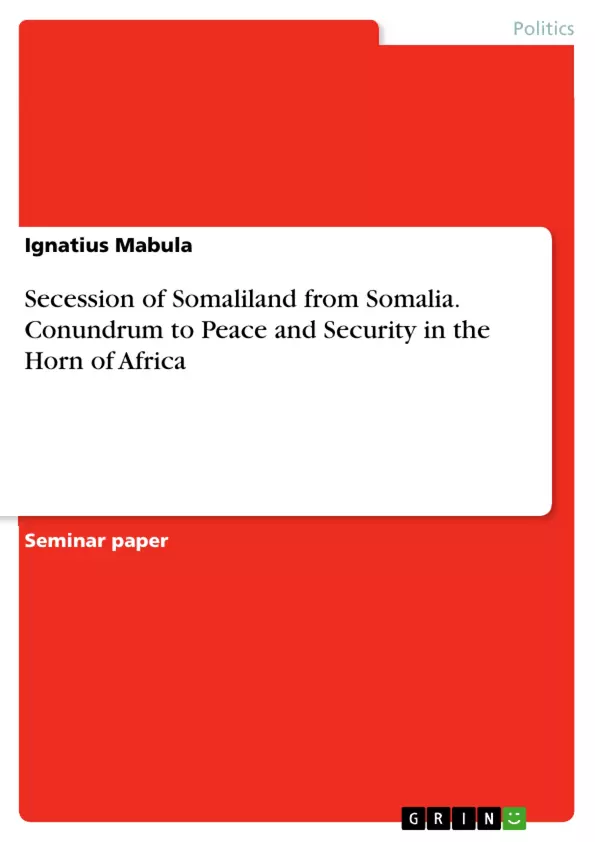Failure to satisfy Somaliland’s desire for peace, security, stability and peaceful co-existence with Somalia which are the tenets of Westphalian statehood, resulted in the collapse of the ambitious project designed to merge Northern Somalia (Somaliland) and Southern Somalia (Somalia) into Republic of Somalia. Since the inception of the Republic, elites from Northern Somaliland complained about Southern Somalia’s dominance in governance where the national flag, national anthem, capital city, Presidency and Prime Minister’s position have been contributed by the Southerners. To rub salt into the wounds of the Northerners, Siad Barre assumed power by means of a coup and installed draconian, discriminative and oppressive laws against the Northern clans generally and the Isaac clan in particular. These appalling conditions experienced by the Northerners cajoled them to hold the bull by its horns and confront the situation. They formed the Somali National Movement (SMN) which protected the Northerners against Barre’s oppressive machinery. Subsequently Somaliland declared unilateral independence because it satisfied Article I of the Montevideo Convention on the Rights and Duties of States (1933) which explains that: [t]he State as a person of international law should possess: Permanent population; Defined territory; Government and Capacity to enter into foreign relations.
Inhaltsverzeichnis (Table of Contents)
- Introduction
- Voluntary Fusion of Somalia and Somaliland: A Poisoned Chalice
- Somaliland Secedes from Somalia: Quest for self-determination and statehood
- International Situations Emboldening Somaliland
- Conclusion
Zielsetzung und Themenschwerpunkte (Objectives and Key Themes)
This paper explores the historical and political context surrounding the secession of Somaliland from Somalia, analyzing the factors that led to the separation and its implications for peace and security in the Horn of Africa. It examines the formation of the Republic of Somalia, the challenges of the union between Somaliland and Somalia, and the international experiences that have emboldened Somaliland's quest for self-determination.
- The formation and challenges of the Republic of Somalia
- Somaliland's secession and its quest for self-determination
- The role of international law and precedents in the case of Somaliland
- The impact of Somaliland's secession on peace and security in the Horn of Africa
- The need for a negotiated solution to the Somaliland-Somalia conflict
Zusammenfassung der Kapitel (Chapter Summaries)
- Introduction: This chapter provides a broad overview of the context of the Somaliland-Somalia conflict, highlighting the long-standing tensions and the impact of civil wars on the Horn of Africa. It sets the stage for exploring the reasons behind Somaliland's secession and its implications for the region.
- Voluntary Fusion of Somalia and Somaliland: A Poisoned Chalice: This chapter examines the historical circumstances surrounding the union of Somaliland and Somalia in 1960. It analyzes the initial challenges of the union, highlighting the political and economic dominance of the South over the North, which led to growing dissatisfaction and resentment amongst the Northerners.
- Somaliland Secedes from Somalia: Quest for self-determination and statehood: This chapter explores the events leading to Somaliland's unilateral declaration of independence in 1991. It analyzes the repressive policies of the Siad Barre regime, the formation of the Somali National Movement (SNM), and the conditions that ultimately led to the collapse of the union.
Schlüsselwörter (Keywords)
The key themes and concepts of this paper revolve around the complex issue of secession in the Horn of Africa. This includes the formation and challenges of the Republic of Somalia, Somaliland's quest for self-determination, the impact of international law and precedents, and the implications for peace and security in the region. Further, the paper explores the roles of key actors such as the Somali National Movement (SNM) and the Siad Barre regime, as well as the broader context of clan politics and the legacy of colonialism in the region.
- Arbeit zitieren
- Ignatius Mabula (Autor:in), 2007, Secession of Somaliland from Somalia. Conundrum to Peace and Security in the Horn of Africa, München, GRIN Verlag, https://www.grin.com/document/377466



